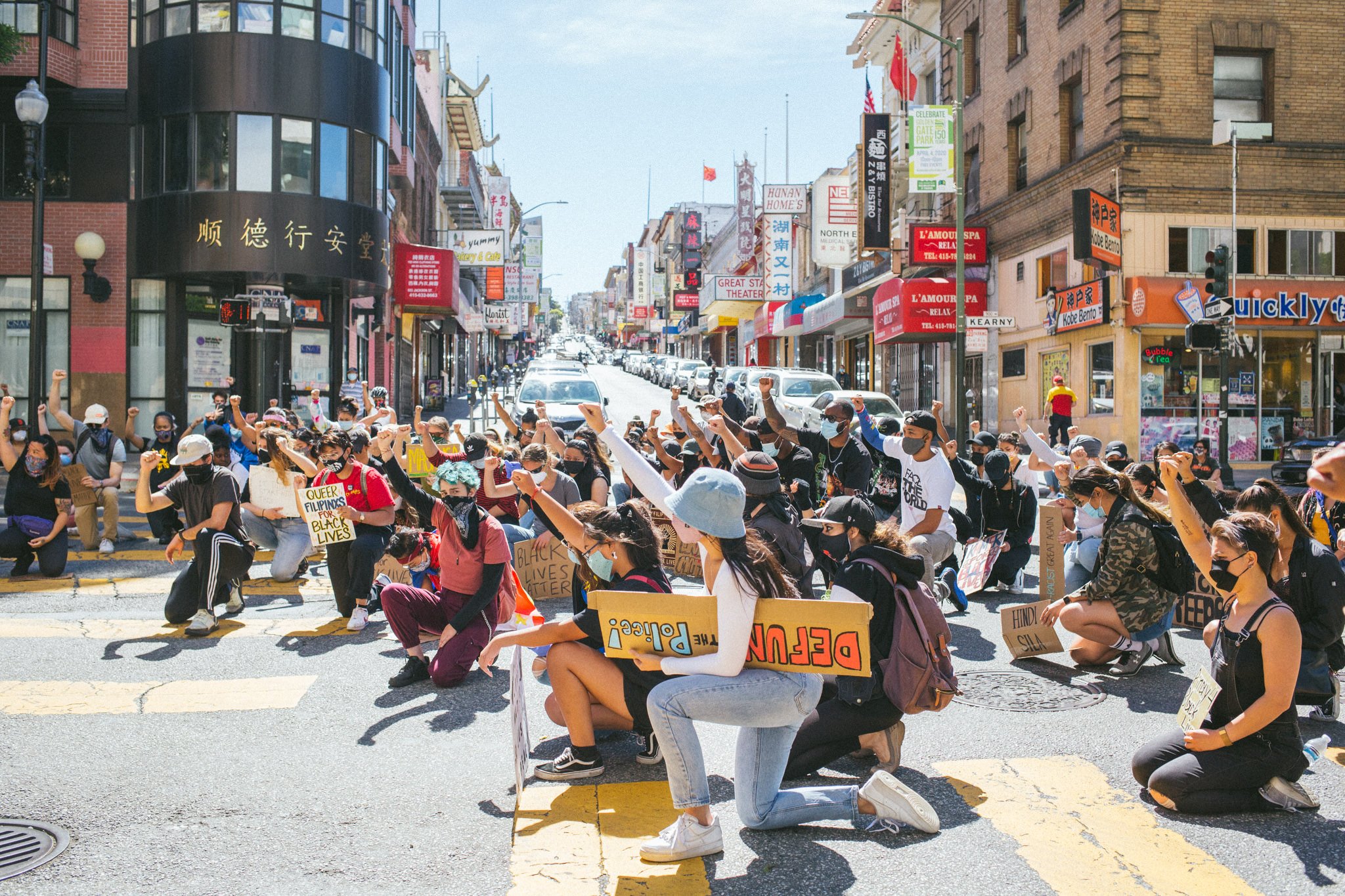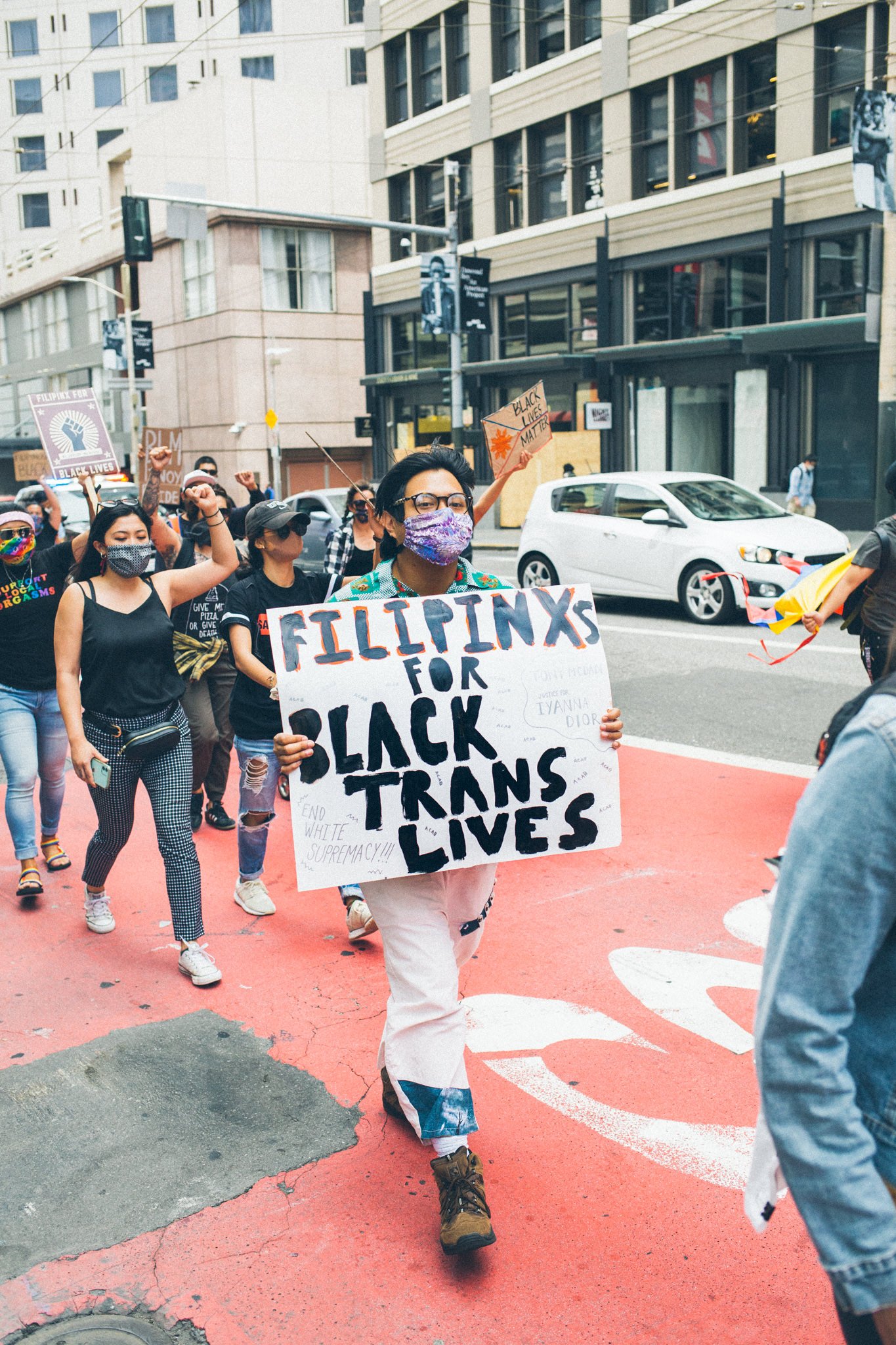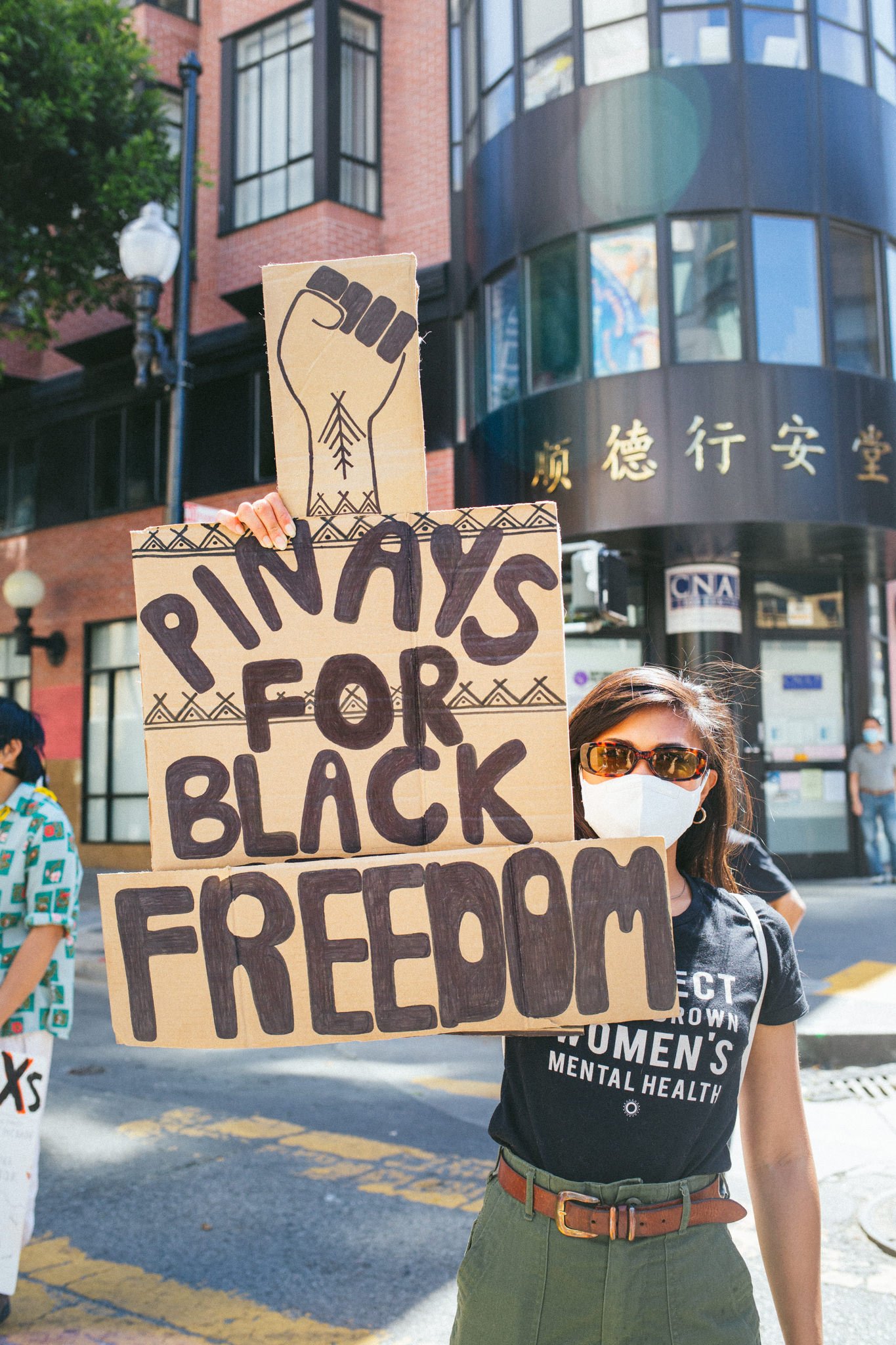The history of the Filipinx community and the Black community in the United States is intertwined.
Protestors kneel outside San Francisco's International Hotel in a moment of silence for George Floyd on June 10, 2020. Organized by Eli Frances Abad, the "Filipinos for Black Lives" march was held in solidarity with and support of the Black Lives Matter movement. Photo: Khariza Rae Photography / kharizarae.com / Instagram: @kharizaraephoto
Editors' Note: The following statement, written by Bobby Dalton G. Roy of the Filipino American National Historical Society (FANHS), was previously published on June 9, 2020. As a Filipinx publication grounded in solidarity journalism, we must first and foremost recognize how foundational the Black Liberation Movement is to our American experience. By working hand-in-hand across racial lines, we can transform our present-day struggles into equitable futures.
The Filipino American National Historical Society (FANHS) is horrified by the murders of George Floyd in Minneapolis, MN; Breonna Taylor in Louisville, KY; Ahmaud Arbery in Brunswick, GA; Tony McDade in Tallahassee, FL; and countless other African American individuals. The anti-Black violence and systemic oppression of Black people must stop. As historians, we know very well how too many Americans, Filipino Americans included, endured segregation and racist violence through the 20th and 21st centuries, fought bravely against fascism during World War II, struggled for civil rights for all Americans, and endure ongoing discrimination today. Black Lives Matter.
One central mission of FANHS is to promote understanding and education about the history of Filipino Americans – the third largest Asian American group and one of the largest immigrant groups in the U.S. Despite the fact that Filipinx are the first Asian group to set foot on what is now known as the continental United States on October 18, 1587, and are embedded into the fabric of American society, studies support that 99% of Filipinx Americans report experiencing racism on a regular basis. The recent protests throughout the world are a collective cry for social justice, and are a reflection of a continuous history of rightful democratic struggles against generations of racism. We particularly recognize that experiences with law enforcement and the legal system have been fraught with racial discrimination and struggle, and we stand in solidarity with the Black community.
The history of the Filipinx community and the Black community in the U.S. is intertwined and we share common threads in the continued struggle for freedom, dignity, and equality.
It is important to recognize our community is composed of many multiracial Black-Filipino families. The first Filipino American community settlement in the late 1700s was in the bayous of Louisiana, where “Manilamen”, who had jumped ship to escape their Spanish Galleon masters, intermarried with Black and Cajun women. Their families are now in their 9th generation. Other historic Filipino-African American families include Rufina Clemente Jenkins and Buffalo Soldier Sgt. Francis Jenkins, the first Filipino American family to settle in Seattle in 1909 (whose descendants, like daughter Dolores Bradley, became civil rights activists in the Central District of Seattle) and Supreme Court Justice Thurgood Marshall and National Association for the Advancement of Colored People (NAACP) activist Cecelia Suyat Marshall (whose descendants have gone on to continue in public service). Others include Latin soul musician Joe Bataan (New York, NY), Seattle Seahawks Superbowl Champion Doug Baldwin (Seattle, WA), and Grammy Award Winner H.E.R. (Gabriella Wilson [Vallejo, CA]), all of whom celebrate their Black and Filipino American heritage.
Read the full article on Filipino American National Historical Society.



